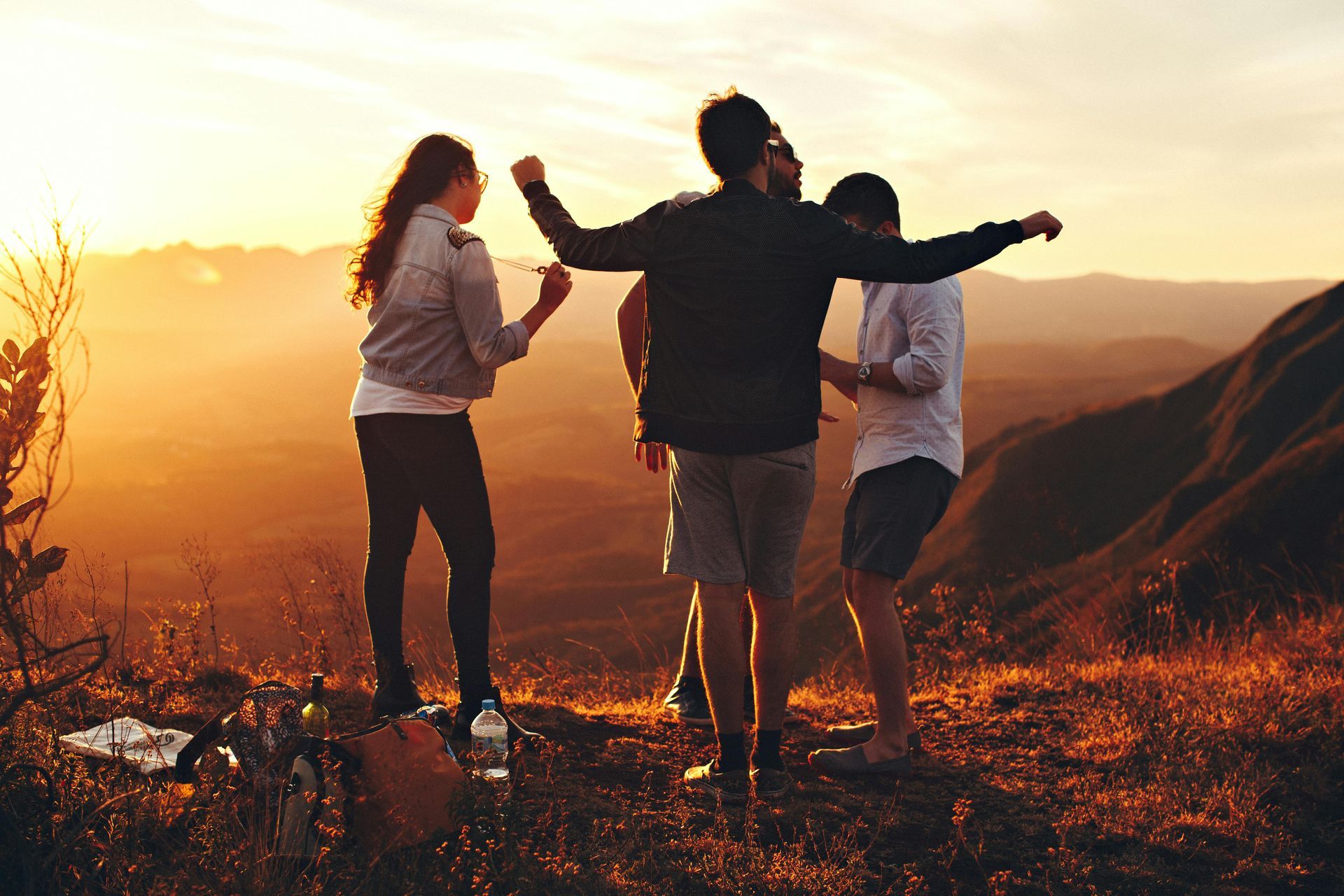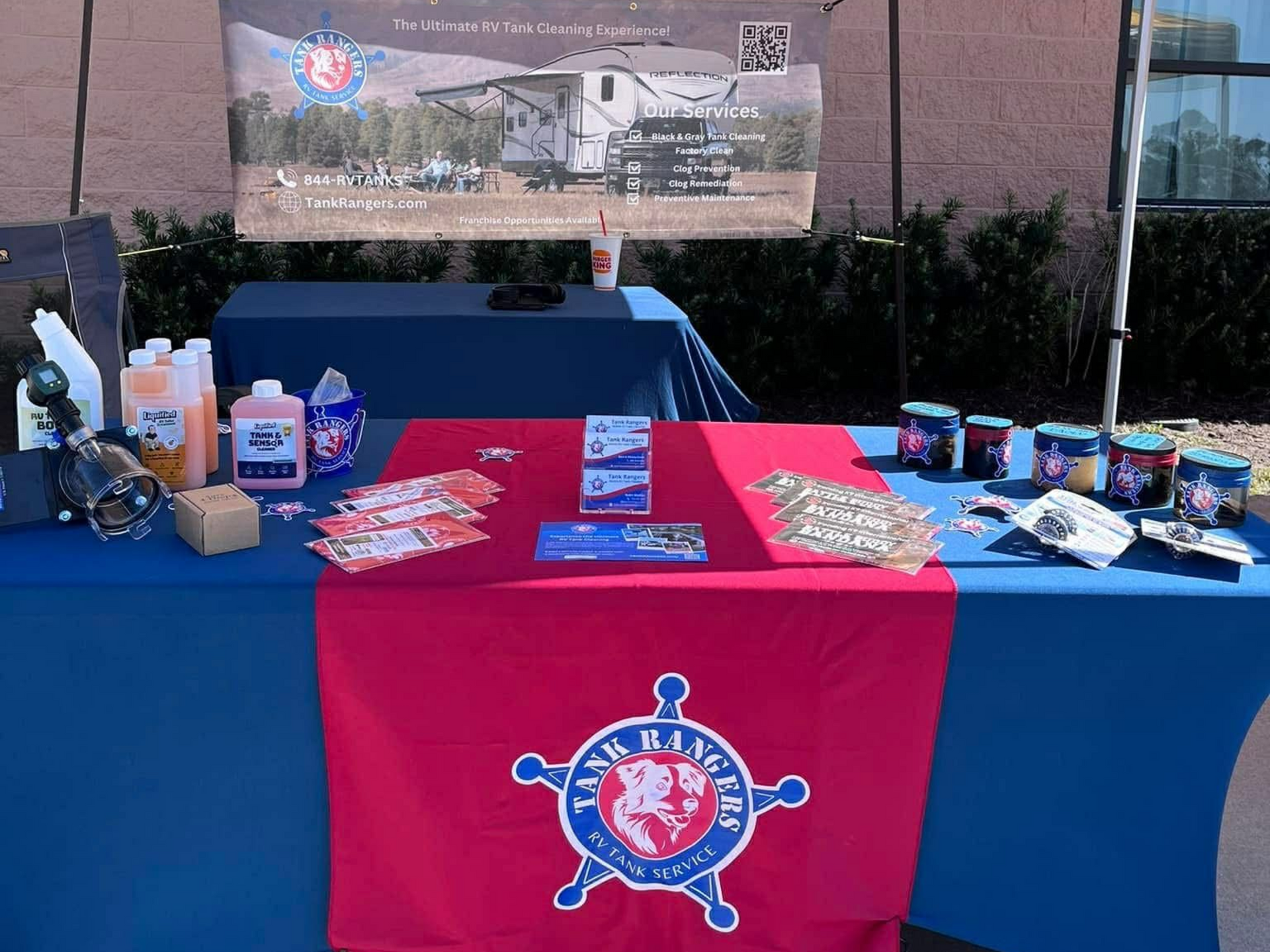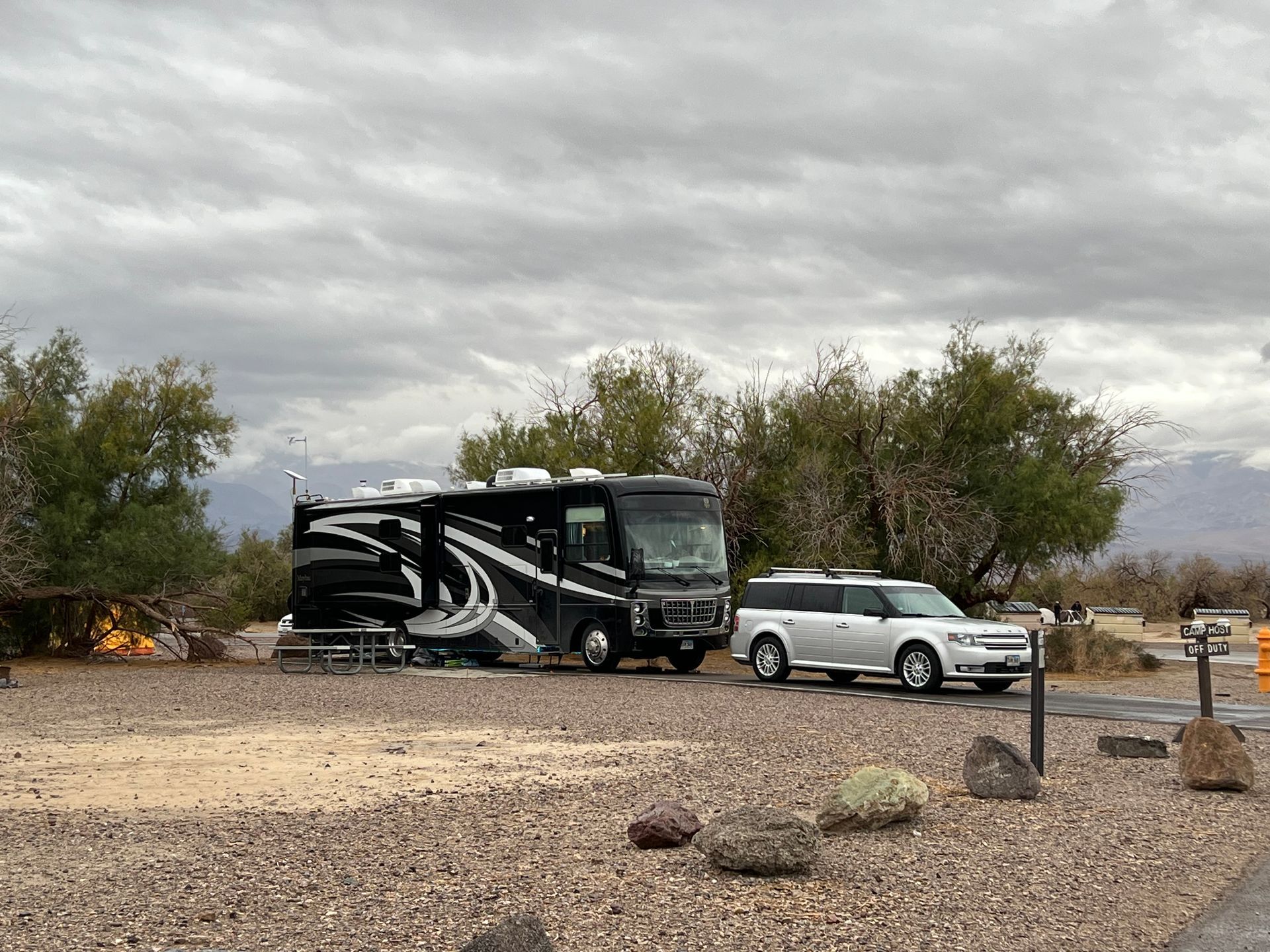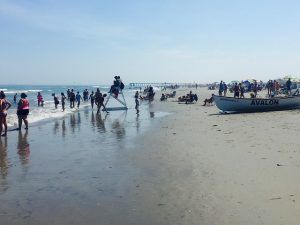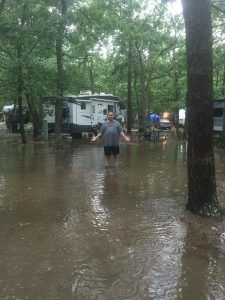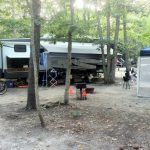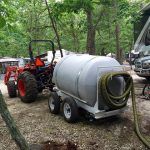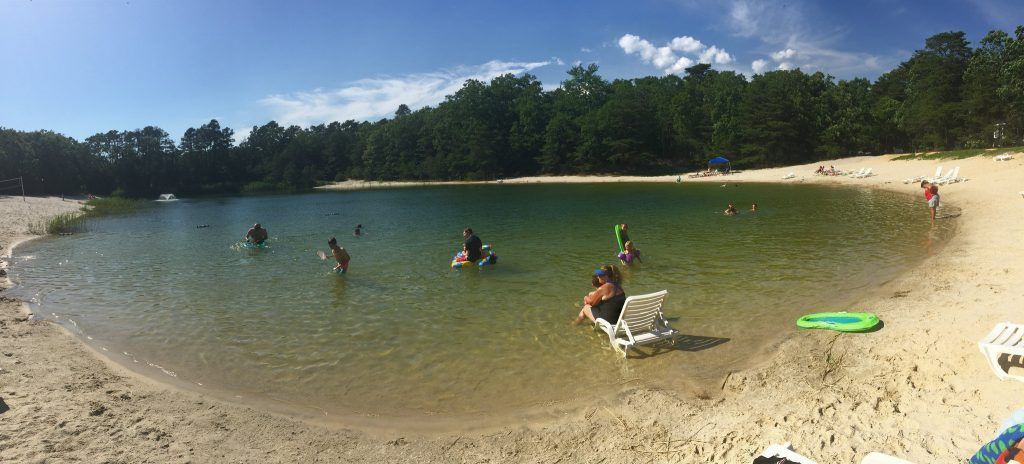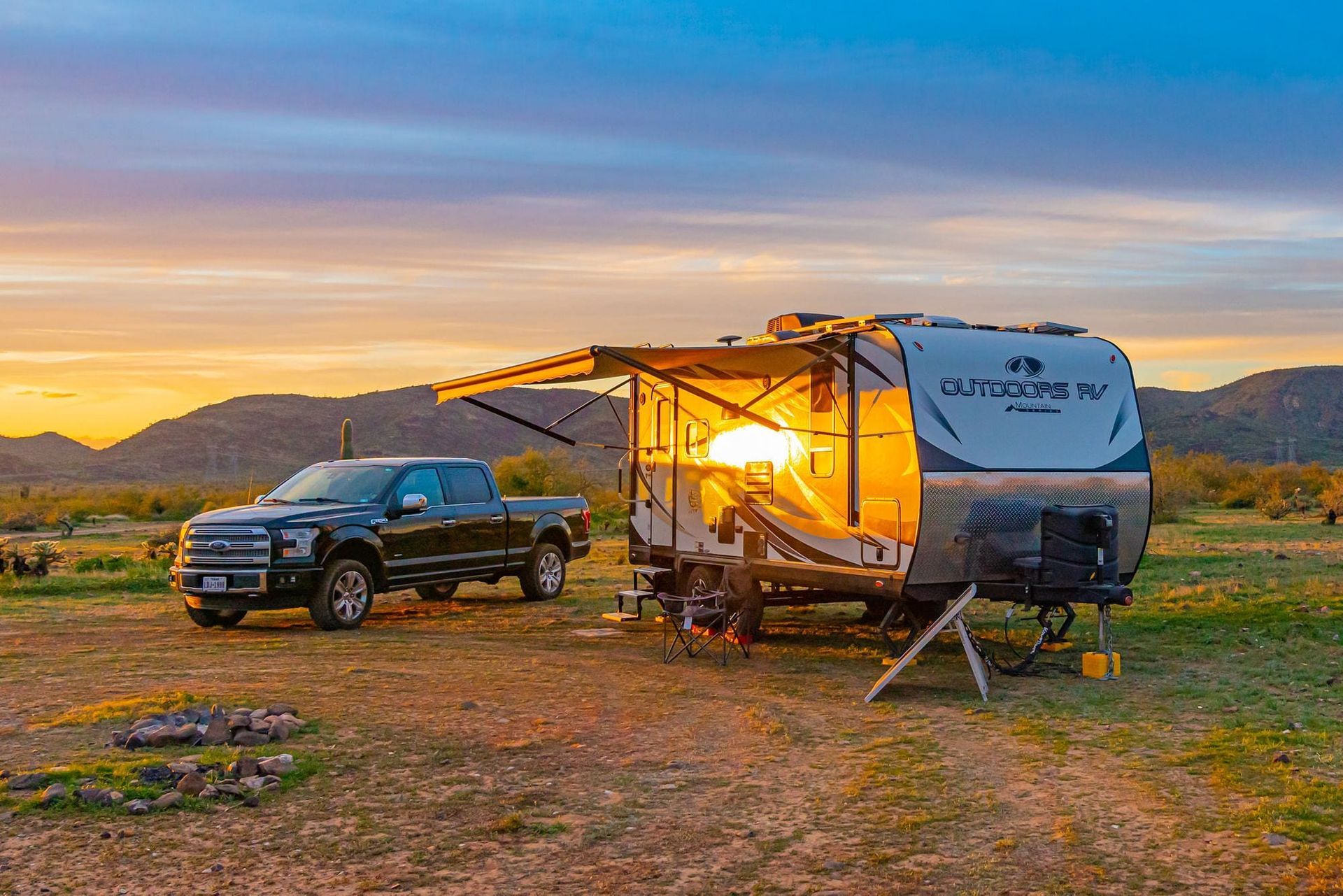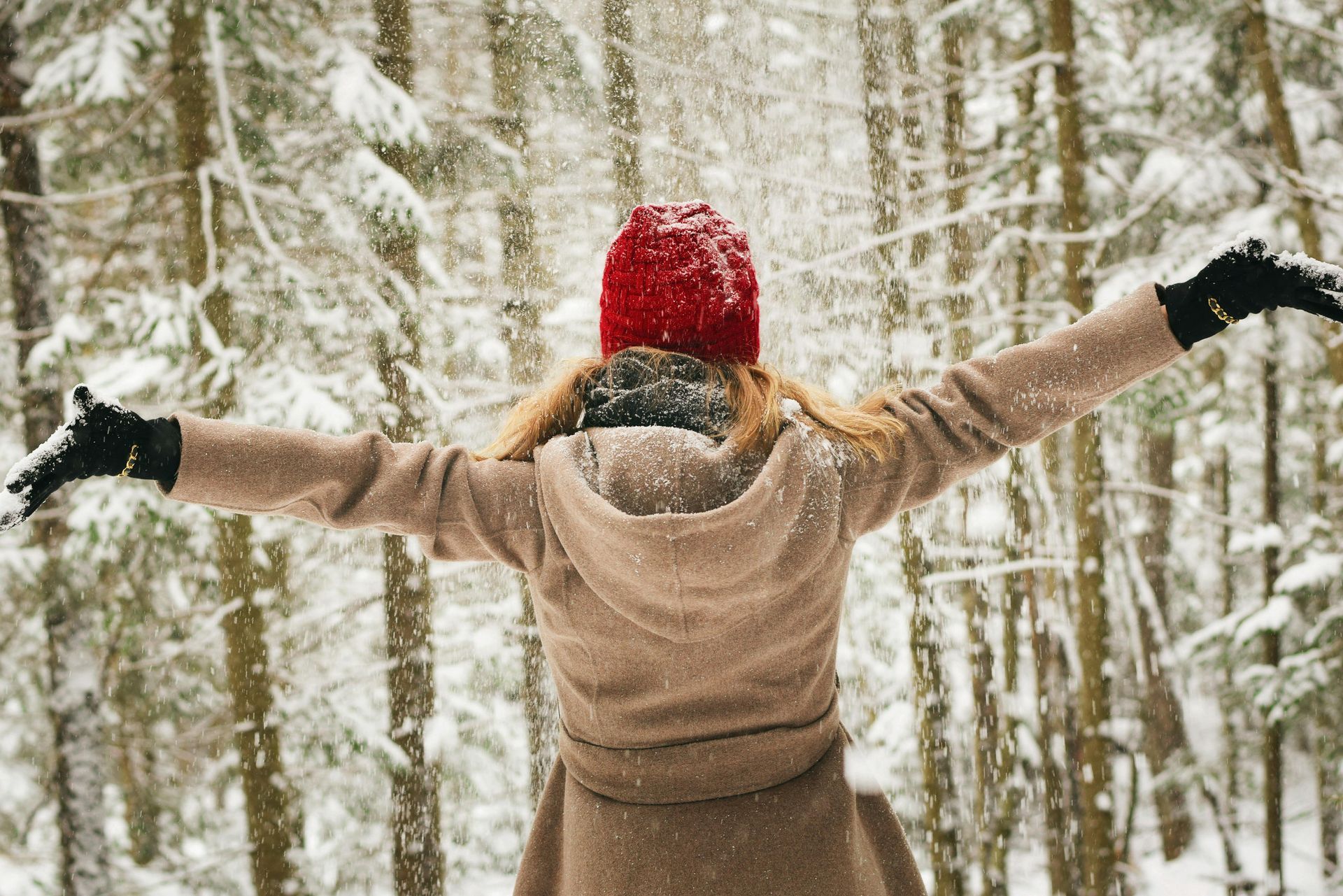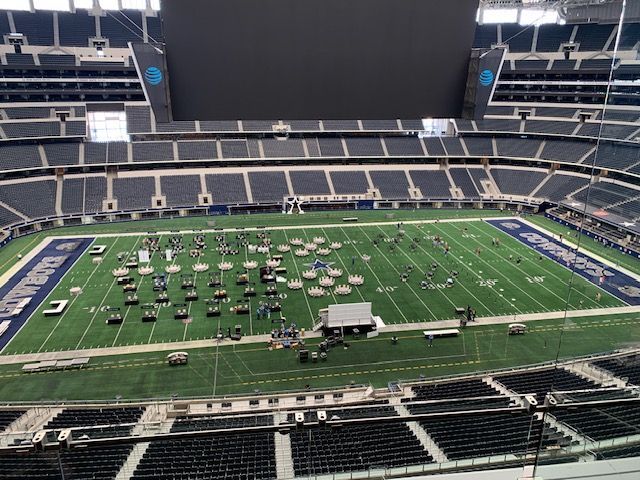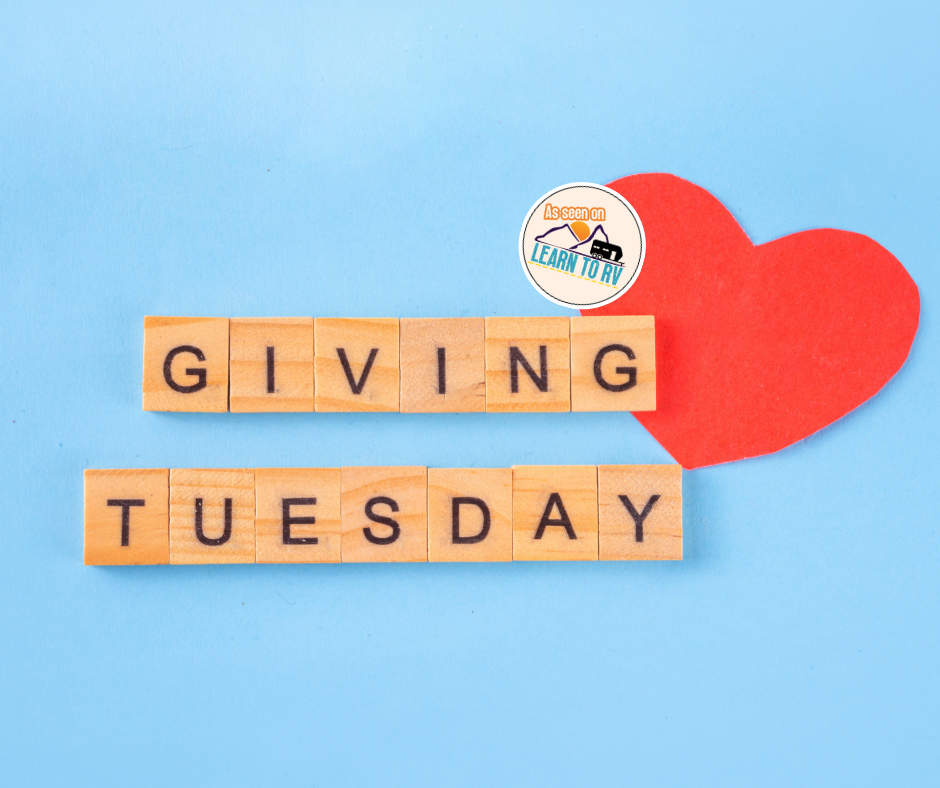Sea Pines, Swainton (inland from Avalon), NJ
Doug S • April 24, 2025
We’ve come to Sea Pines 3 or 4 times now. First in our pop-up and now a few times in our fifth wheel. Location-wise, it’s excellent and very easy to get to the beach in Avalon (5 miles) or Stone Harbor (7.50 miles), NJ yet the campground is fully wooded. I enjoy it here- fairly quiet for a beach area campground.
Being a Thousand Trails park, the sites are first come first served. With only 1/2 of their 550 sites having sewer hookups (and I’d guess many of them are taken by seasonal campers), getting a full hookup site can be a challenge if you get here on a Friday.
Sites (sandy gravel, fairly level- very wet when wet)
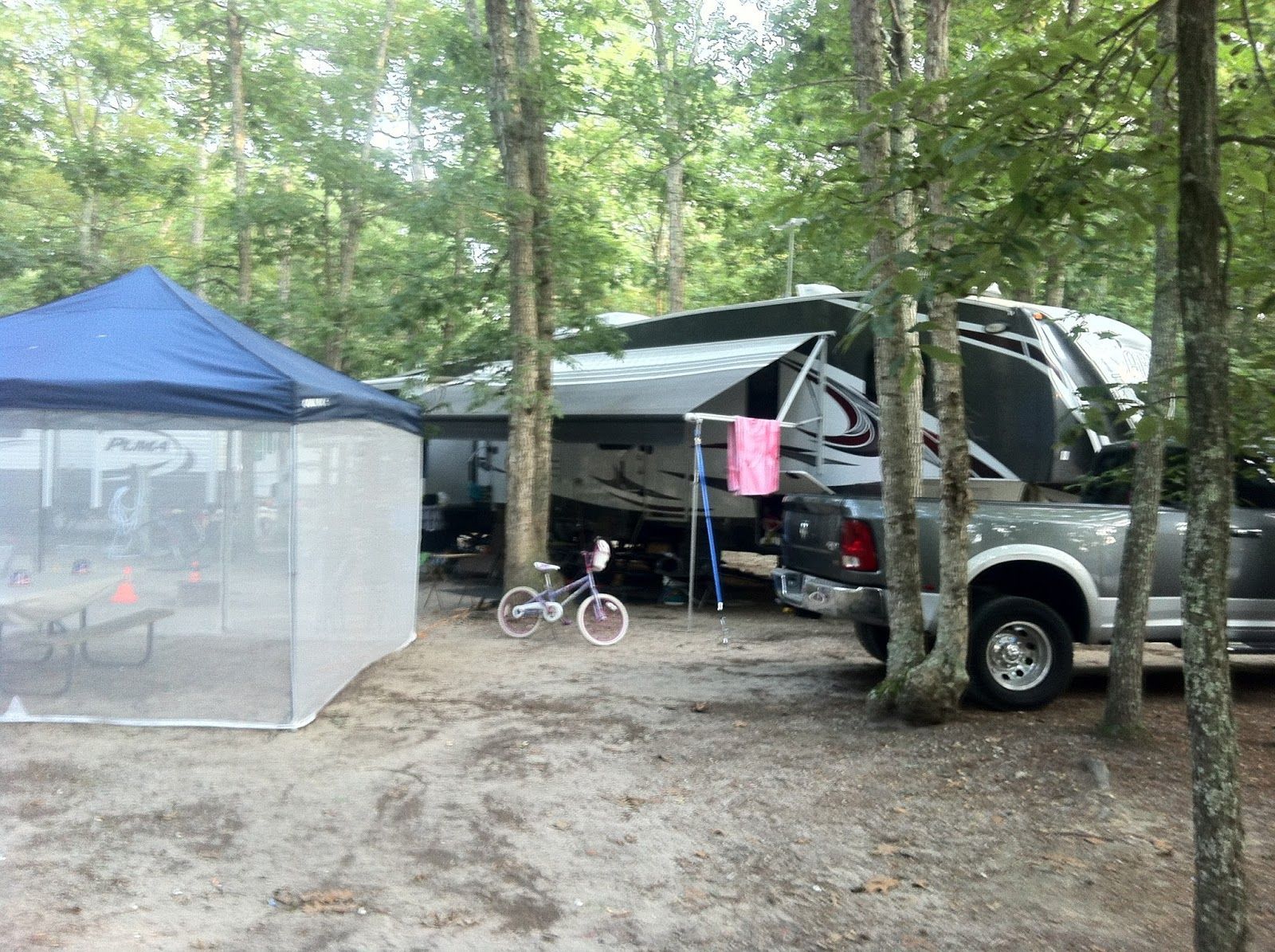
The sites have all been fairly level, usually only needing one block. A few sites (like the one we’re currently in) violates one of my campground cardinal sins- the low side is the door side. That’s a pet peeve of mine since you have to block up that side and then it makes the door even higher off of the ground. Fortunately, like I said, it is only 1 block high and doesn’t make a huge difference.
The sites are all sandy/gravel. It makes a pretty good mess inside of the camper. We have an awning mat that we keep outside AND use a welcome/shoe mat. It helps some, but daily or every other day sweeping of the floors.
The other regular thing about the Sea Pines sites is that when it rains, water pools in many of the sites. Sometimes as deep as an inch or two. (No exaggeration- sometimes there will be 2″ of standing water while it rains.) The good news is that it drains pretty quickly. The bad news is, a LOT of people here have tents setup. I can’t imagine what the insides of those tents look like after some of these hard rains.
Site-wise, the sites range from fairly tight to incredibly spacious. The site that we’re in now is #324. We have room for our camper, the awning fully extended and then we even have a 12×12 screen tent sitting out and there’s still room for the kids to go out and play.
I was impressed to see that before we got to this site, someone had obviously raked the site and cleaned up the area. I’m surprised being that they are first come, first serve sites and people don’t usually “check out” like normal campgrounds.
All sites are 50amp electricity. The water spigot can be far from your water bay. It was here that I had to buy a second water hose (fortunately I always carry 1/3-1/2 of a tank of fresh water, so we could get one at our leisure!). And even this trip, we’re using both hoses and I don’t have enough hose for my black tank flush (I have a hodgepodge of hoses for my black tank flush and I’m about 8′ short).
Big Rig Friendly? (Mostly yes)
I say “mostly yes” because there are a few turns in the campground that are pretty tight. Like I said above, it’s a very wooded campground so there are a lot of natural obstructions. In fact, I had one turn that I barely made. I had to finagle forward and backward a bit to clear the road sign and trees. It was the closest that I’ve come to getting stuck in a turn ever. Scared me, to be honest. Other than that, we’ve had plenty of sites that our size fits. Not all, of course- but a good selection. There was one when we got here that we tried to get into, but an ill-placed tree opposite to the site made it impossible to swing the truck to get the camper in. We tried the approach twice, even had a neighbor move their car- but at the end of the day, it just wasn’t happening and we moved on.
Bathrooms and Showers (Hit or miss)
There was some really bad publicity for the campground on Facebook last year showing mold growing in the showers. It was UGLY . But, after complaints to the manager, it was cleaned up. We’ve never seen mold like that when we were there. But, the showers are ends up with a dirty floor due to sandy/gravel- it’s just impossible to keep clean. The showers themselves are passable if you get one with good water pressure. Try for the end showers, they usually fair the best.
Amenities (Limited)
Truth be told, you’re coming to this campground for the beach and the surrounding areas. The pool is fairly small, but it does have a kiddy pool for the little tikes. As well, there is a small lake with a beach area for swimming. My family told me that the lake water was WAY warmer than the pool and ocean. There is a small game room in the store that didn’t seem air conditioned when we went in. And I think there is minigolf and ping pong. There aren’t a whole lot of organized activities except a couple of things each weekend. But, it’s generally quiet and we like that.
There were 6 or so each of washing machines and dryers in the laundry area.
Cell Phone Service (Fine, currently using a hot spot)
I’ve never heard anyone complain about phone service. We use AT&T and have a dedicated Wifi hotspot device. It’s getting 4G speeds and is plenty fast for me to work.
I use my hotspot because most campgrounds WiFi stinks and, in this case, it costs money. I’m already paying for the hotspot, so no sense in paying extra for campground WiFi.
Over-the-air TV Service & Cable (Over-the-air was limited; cable offered)
We get a small handful of channels (3 or 4) clear enough to watch over the air. But, we generally don’t spend the time to “aim” the antennae to dial it in. What we get is what we get when we raise the antennae. Cable is offered for $3/day with discounts for monthly and seasonal folks. We normally don’t buy cable, but went ahead and did get it for a weekend trip recently- the quality was decent enough, though I might have some wiring issues in my camper (sad face).
Camp Store (basic, but has the necessities)
Fairly limited in what they offer, but it seems like they covered the necessities quite well.
Overall Rating/Comments (3.5 out of 5 stars)
Being so close to the beach, it’s obviously the destination. The towns of Stone Harbor, Avalon, Ocean City, NJ, Cape May and Wildwood are all easy drives and are tourist destinations. Stone Harbor has a great little shopping area when you “go into town” as my wife’s family says. Avalon’s beaches are nice and there’s a couple of good eats (Tonio’s Pizza is a great place for a quick slice and Oceanside Seafood is great seafood in a casual atmosphere). Ocean City, NJ has a great family friendly boardwalk. Cape May is a beautiful area with beaches for looking for sea glass, a great shopping “mall” (closed off streets) and great food (Cucina Rosa has amazing Italian food & The Lobster House is pretty good, but expensive (pro-tip- the food is better in the off-season)). And Wildwood is the classic boardwalk with piers of rides, classic boardwalk crap shops and lots of people watching. Just “Watch the Tram Car please”.
My 3.5 out of 5 star rating really comes down to the outdated-ness of the bathrooms and the limited sewer sites. The standing water when it rains can be a hassle but can be managed. We’ve always found the staff to be pleasant to deal with.
Other blogs you might like...
